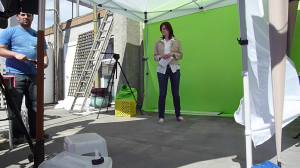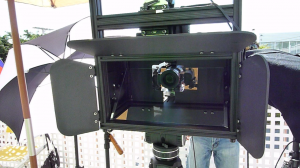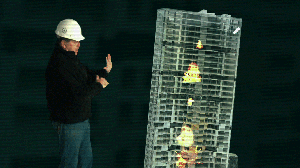The mini beam splitter rig: portability for 3D documentary filmmakers
The mini beam splitter rig concept we came up with to film elements of our first 3D documentary has come to fruition.
We decided to try and build because the thought of moving and setting up our Film Factory 3D Indie BS Rig for one or two close ups is just too painful. Now we can use this smaller unit to shoot these components for the explosive demolition series Blowdown and save schlepping the full-sized rig around the Fonte Nova Stadium in Salvador, Brazil for when we’re shooting extensive B roll in one location.
The goal was to custom-design a rig that would house two Canon 7Ds and that was small enough and light enough to be operated by one person, handheld.
To achieve this, the mini beam splitter rig:
1) Has customized aluminum rails that aren’t as big and fat as the ones on the Film Factory Indie rig.
2) Is bolted and tweaked specifically for the dimensions of the Canon 7Ds.
3) Has a smaller box.
4) Is designed so the second camera is underslung – easier to handle because it’s not as top-heavy.
5) Allows us to get camera lenses closer to the mirror.
It was whipped up in a couple of days, and it’s not pretty – but it is portable and robust. We’ll see if it works.




